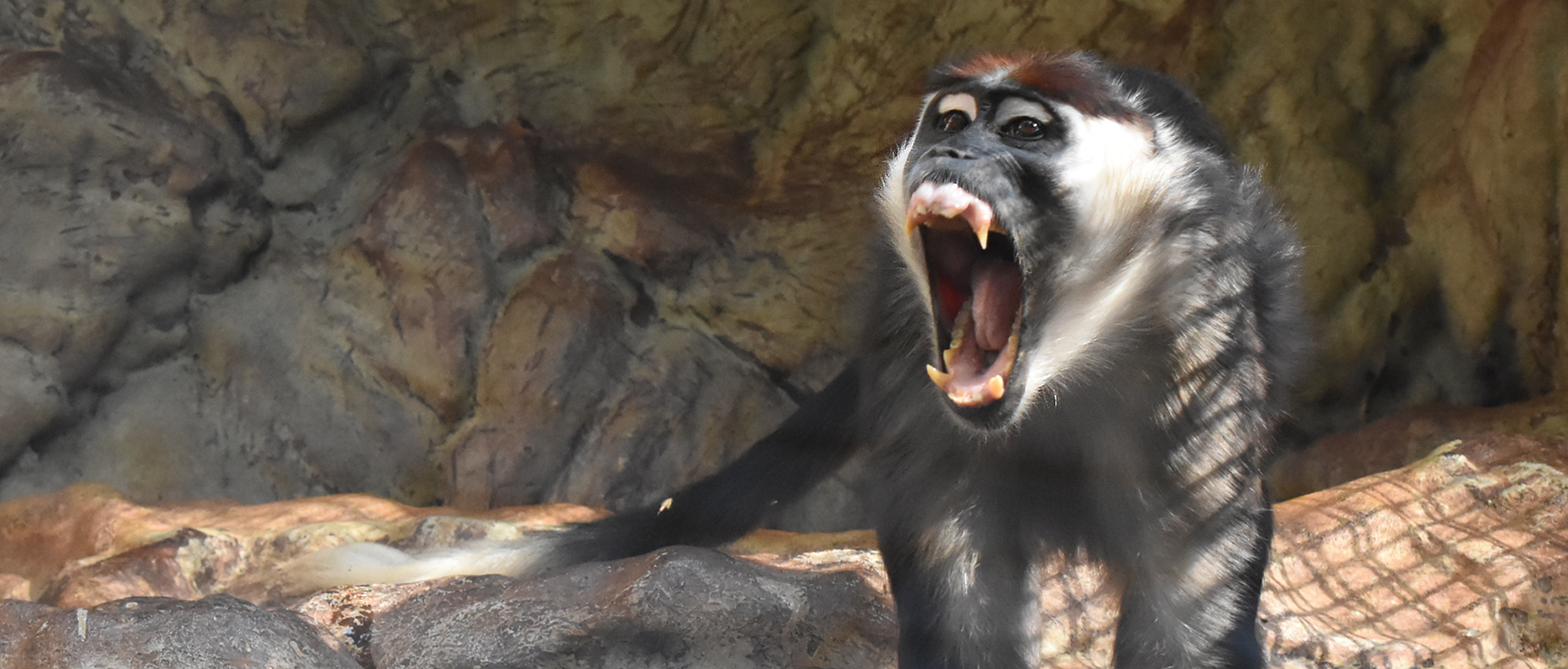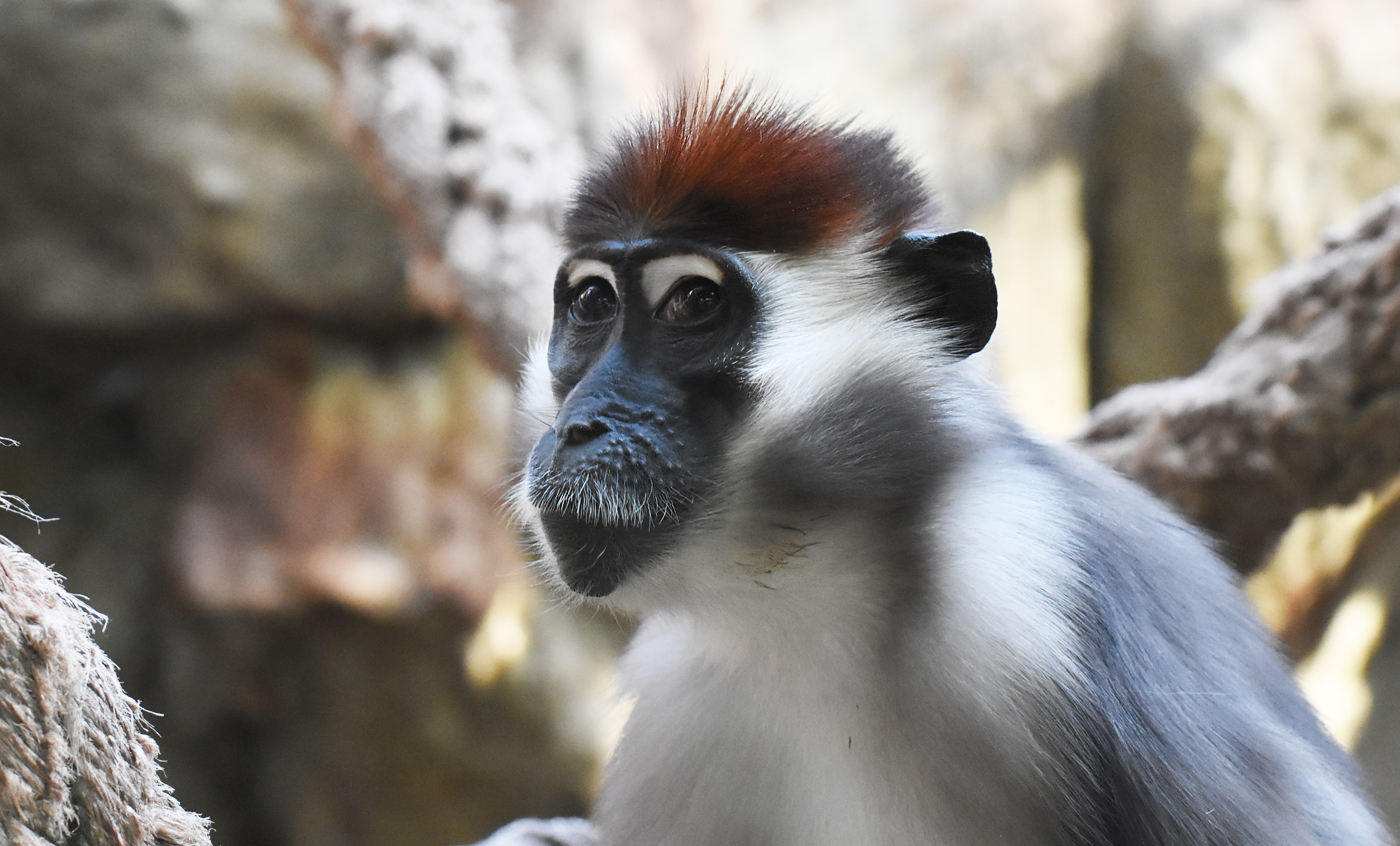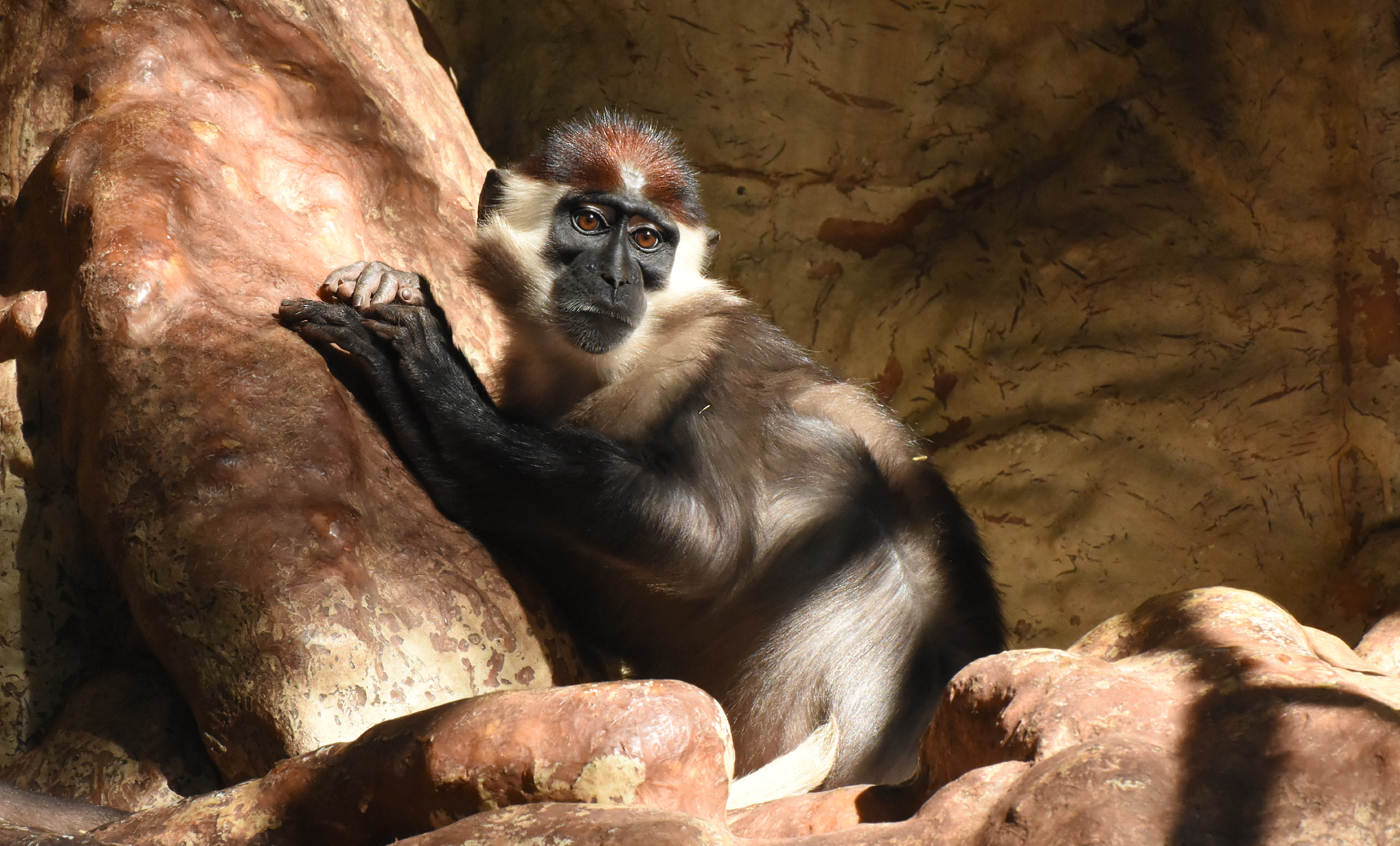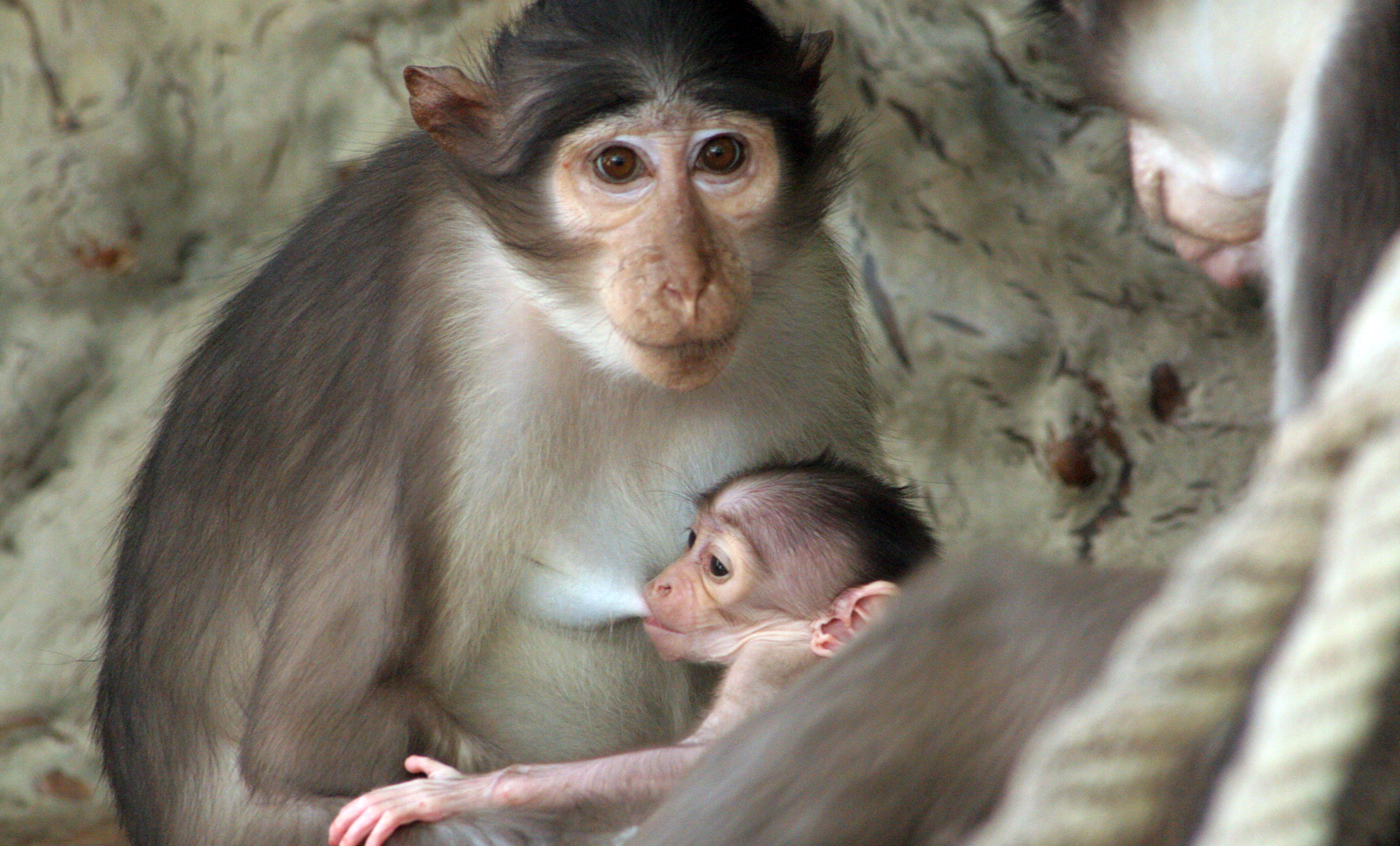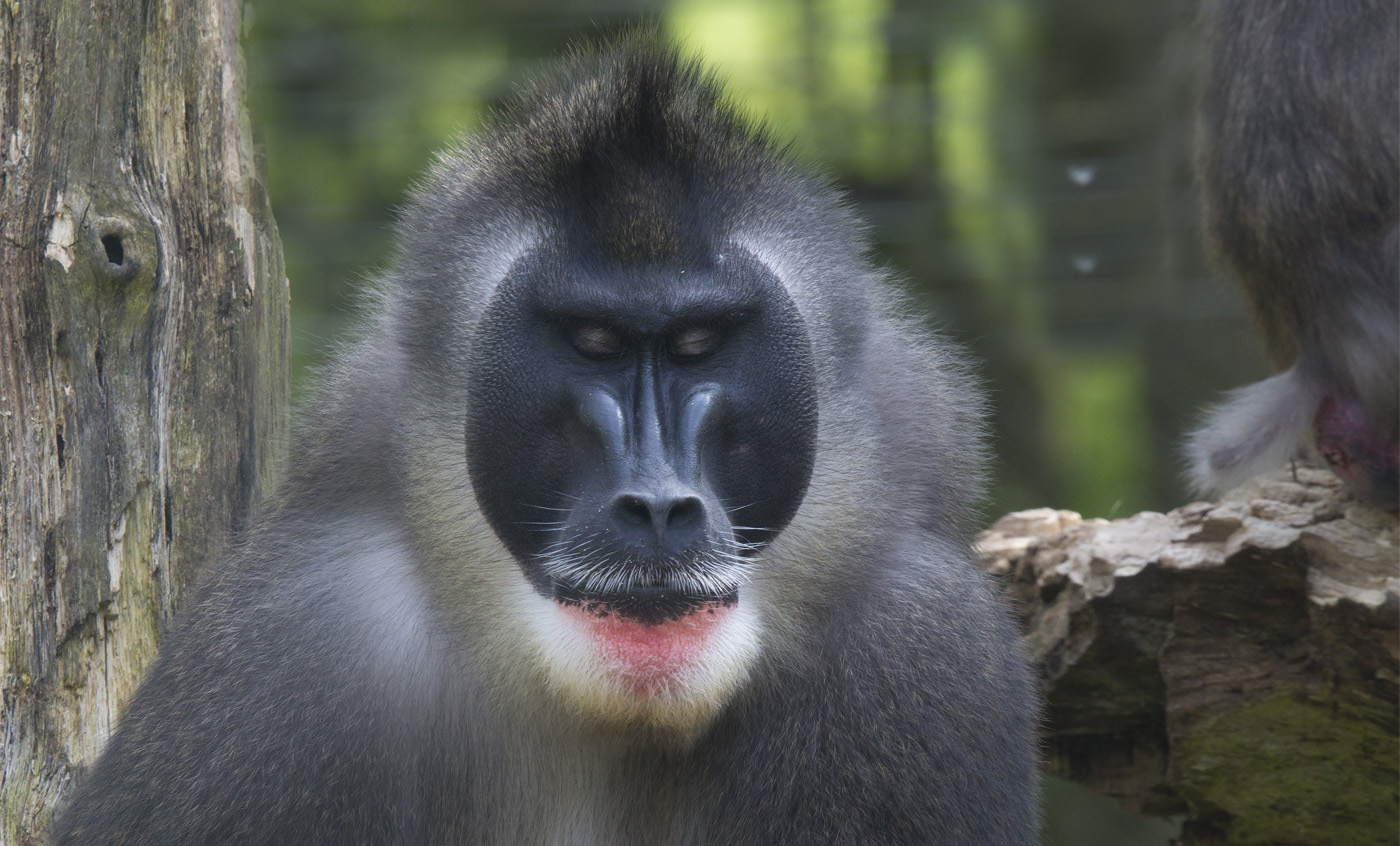Red-capped mangabey
This remarkably arboreal mangabey moves along tree branches during the day in groups of up to forty individuals, but scatter in small groups to sleep at night.
Its diet is omnivorous. It mainly feeds on fruit, seeds and berries, but it also captures insects, steals eggs from bird nests and, on occasion, eats the remains of animals left by predators.
Breeding program
Natural habit
Eastern Africa; southern Nigeria, Cameroon, Equatorial Guinea, Gabon and south-western Democratic Republic of the Congo.
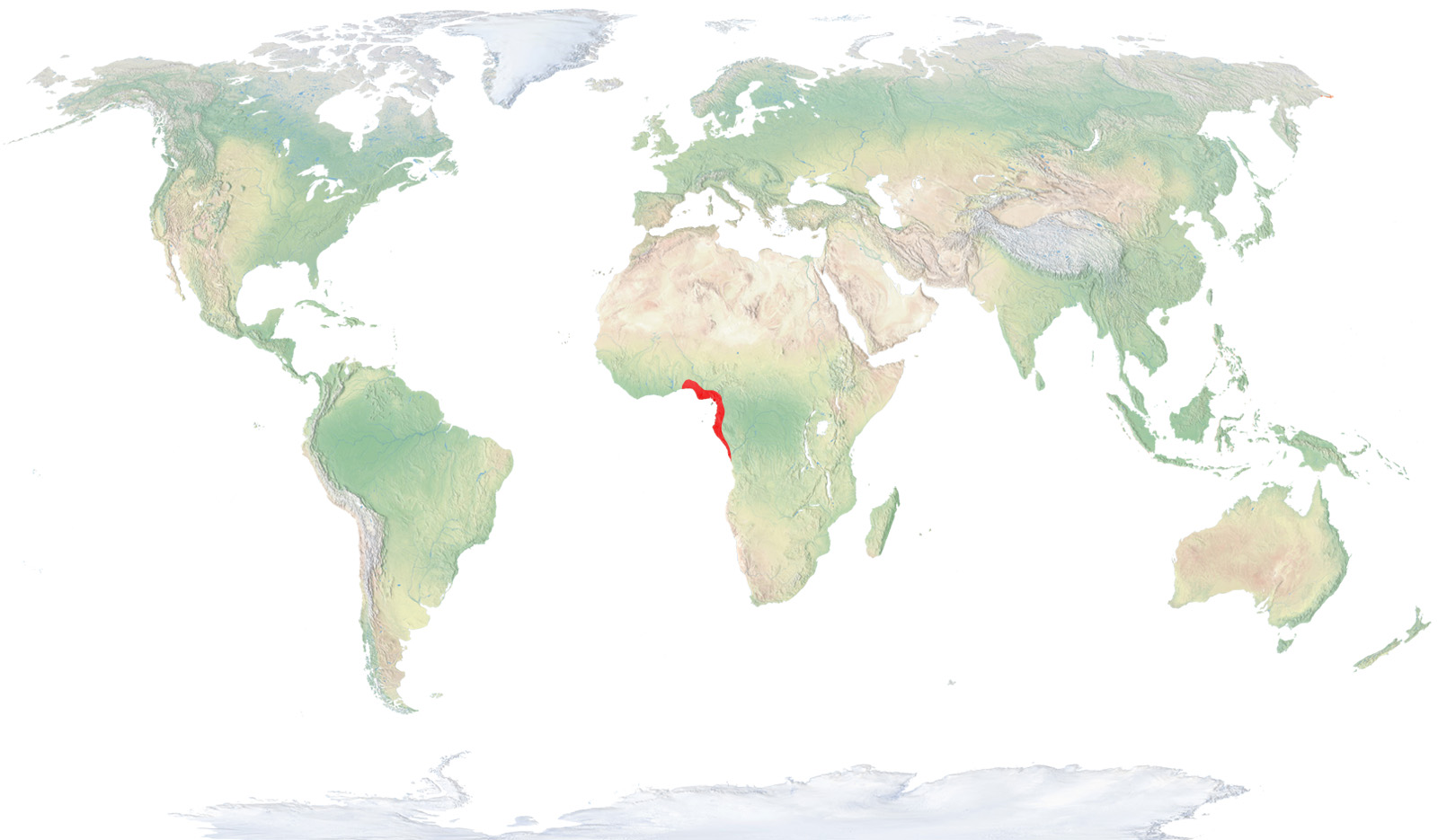
- Distribution / Resident
- Breeding
- Wintering
- Subspecies
Risk level
- Extint
- Extint in the wild
- Critically endangered
- In Danger
- Vulnerable
- Near threatened
- Minor concern
- Insufficient data
- Not evaluated
Taxonomy
Physical characteristics
Biology
Reproduction
Biology
Its fur is grey on the back, while the underparts and the tip of its long tail are white. Its face is black and its eyebrows and cheeks are white. It is completely unmistakable, due to its cap of reddish fur on the top of its head.
It lives in dense rainforests, swamp forests, mangroves and riparian forests, but it has also been spotted in secondary forests and even crops-surrounding areas close to forests.
Its diet consists on fruits and tender plants, which it complements with seeds, insects, eggs and small vertebrates. As in other mangabeys, it has big and strong incisors, which allow it to eat fruits and hard seeds that other guenons in the same environment are not able to consume.
Gestation lasts for about 170 days and generally a single infant is born each time. At the moment of birth, a baby mangabey is almost hairless, but it already has its cherry coloured crown. Young mangabeys have darker fur than adults.
It forms groups that can be quite large, up to sixty individuals, whose core is formed by females, who have a strict hierarchy between themselves and infants, with the presence of different adult males. Females remain in the family group, while young males usually leave far away from the group upon reaching maturity. These animals have a wide variety of vocalizations and their shouts can be heard from afar. They mark their territory by means of these vocalizations.
This species is endangered, due to the fast deforestation of its habitat and to excessive hunting, as its “bush meat” is highly valued for human consumption.
The Barcelona Zoo is the coordinator of the ESB of this species.



